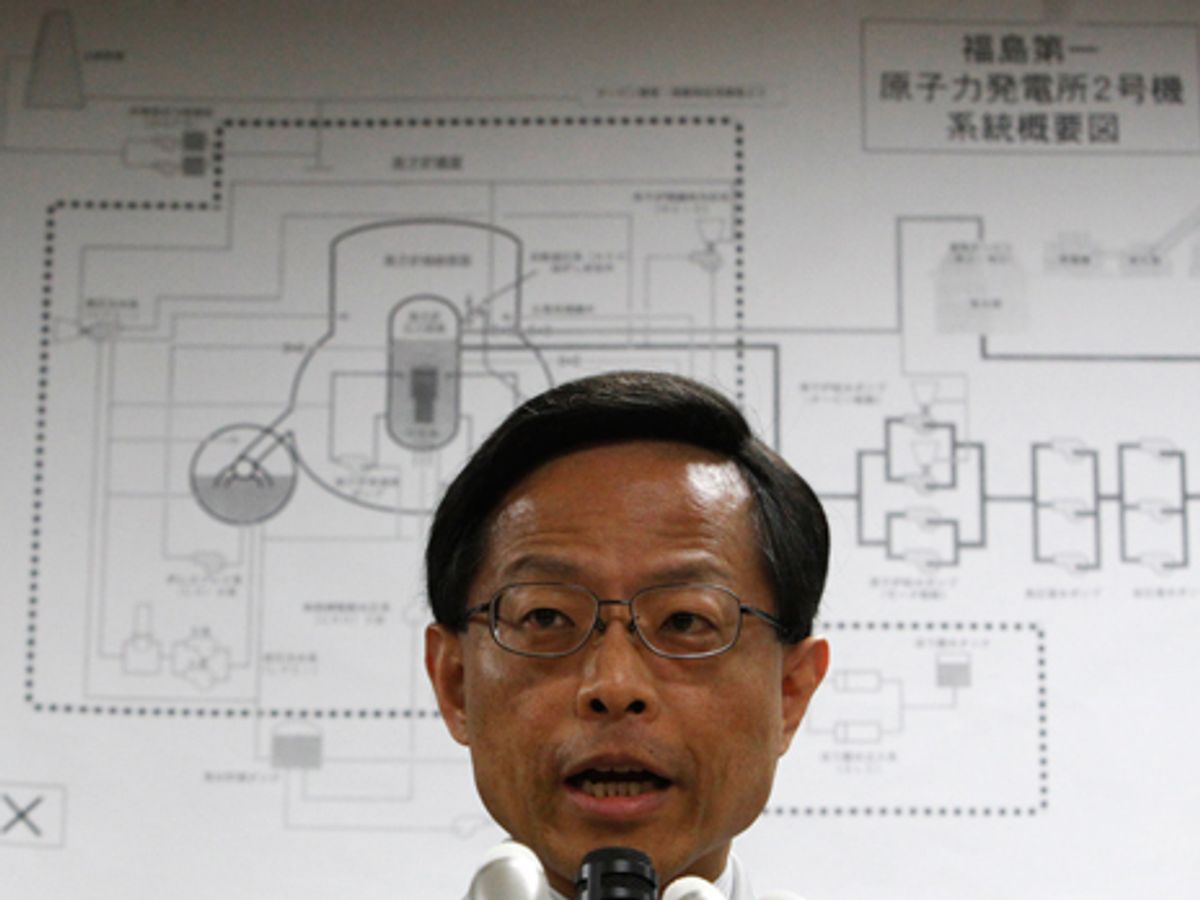Editor's Note: John Boyd is an IEEE Spectrum contributor reporting from Kawasaki, Japan. This is part of IEEE Spectrum's ongoing coverage of Japan's earthquake and nuclear emergency. For more details on how Fukushima Dai-1's nuclear reactors work and what has gone wrong so far, see our explainer and our timeline.
Three weeks after the fateful day--11 March--when a 9.0 magnitude earthquake and a devastating tsunami struck northeastern Japan, the crisis at the crippled Fukushima Dai-1 Nuclear Plant continues. Tokyo Electric Power Co. (TEPCO) is still searching for the source of radioactive materials entering the sea in the vicinity of the plant. Late Thursday, the company reported finding contaminated groundwater at the site for the first time, and it has also been disclosed that many workers on the site do not have dosimeters to measure their exposure to radiation. Meanwhile, Japan’s Nuclear Safety Commission explained why its radiation findings differ from those of the International Atomic Energy Agency (IAEA). The international agency suggested yesterday that levels at a village outside the plant’s evacuation zone met its criteria for evacuation.
Hidehiko Nishiyama, deputy director-general of the Nuclear and Industrial Safety Agency (NISA), said in a morning press briefing that TEPCO was still unable to find the cause of high radiation measurements detected in the ocean some 300 meters south of the reactor drainage outlets and so was still unable to take preventive measures. He added that monitoring efforts would be increased to help trace where the contamination was coming from.
TEPCO also reported that groundwater outside all the reactors except No. 4 was contaminated with radioactive material. It is possible the contaminants got there as a result of the water injection operations that have been carried out continuously to keep the spent fuel storage tanks from overheating. The company says it will analyze the water and report on the findings later today.
In a new development, NHK, Japan’s national broadcaster, reported that most of the 5000 dosimeters TEPCO had at the Fukushima plant had been destroyed or lost during the earthquake and tsunami, leaving it with only 320 working units. As a result, in some work groups only one worker had been issued a dosimeter.
According to NISA’s Nishiyama, TEPCO has been reprimanded for breaking safety rules. TEPCO officials said the company is changing its work plans and will postpone some low-priority tasks so that no one has to work without a dosimeter. The company is also seeking to borrow dosimeters from other nuclear power plants.
In a press conference yesterday, Japan’s Nuclear Safety Commission (NSC), the supervisory agency that administers the country's nuclear regulations, defended itself against claims that the evacuation zone around the Fukushima Dai-1 plant is too small. On Thursday the IAEA said radiation in a village 40 kilometers from the damaged plant and well outside the government’s 20 km evacuation zone measured high enough to meet one of its criteria for ordering an evacuation. But an NSC official said the agency believed its way of judging the effects of radiation on human health was more comprehensive than that of IAEA’s.
The NSC official said that IAEA was taking radiation readings only on the surface of the ground, and the radiation detected could have been from material deposited by rainfall. The NSC on the other hand took into account additional measurements such as samples of soil, the atmosphere, and crops. After aggregating these results, it said it saw no reason to order an evacuation at present.
Akio Yamamoto, a professor in the Reactor Physics Group at Nagoya University, agreed with NSC’s assessment. He told IEEE Spectrum that, because the international agency used a limited number of radiation measurement points, “The IAEA measurement results might be large.” On the other hand, NSC’s utilization of several monitoring results should “give a more accurate estimation of the radiation affecting inhabitants…The NSC recommendation is rational.”
In an update on removing the contaminated stagnant water from the turbine buildings, NISA said that yesterday workers had finished transferring water out of the Unit 1 condenser tank and into the surge tank of the reactor’s torus. The same procedure is currently being carried out for Units 2 and 3. When this part of the operation is completed, TEPCO will begin pumping water from the hot wells, which are normally used in the conversion of steam back to water, and into the condenser tanks. This will free the hot wells up for receiving the stagnant water pooled in the turbine basements.




